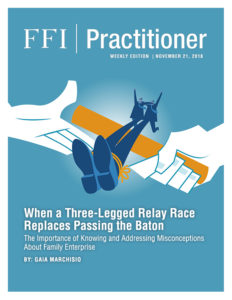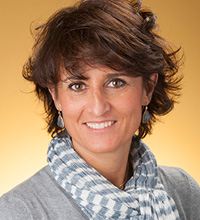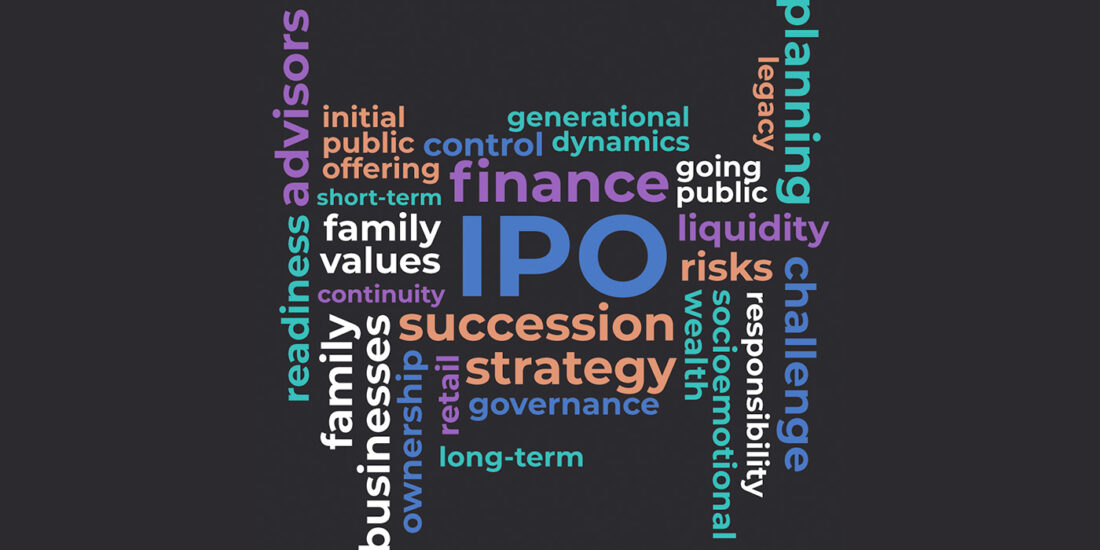
View this edition in our enhanced digital edition format with supporting visual insight and information.
The Importance of Knowing and Addressing Misconceptions About Family Enterprise
Thanks to Gaia Marchisio for this week’s article which discusses the importance of recognizing and addressing strong beliefs about “universal truths” and misconceptions in the field of family enterprise. In this article, Gaia urges advisers to avoid becoming too narrow-minded and entrenched in an established way of thinking. Instead, she encourages advisers to maintain an outsider’s perspective on conventional family business truths that are often taken for granted.
As a multilingual living overseas, I have spent years experiencing the shades of the meaning of words and the power of culture. There are several benefits to this experience — the most relevant being how to deal with changes in perspective and becoming sensitive to “what is lost in translation.” Interestingly enough, the farther we go from our home country, the more intimate we become with our origins. By challenging the universal truths taken for granted growing up, we gain the powerful gift of an outsider’s perspective.
This gift allows us to be more conscious of a significant risk in our job as advisers, i.e., becoming an expert and losing perspective. Being deeply involved in an area of expertise, and never challenging the universal truths that are a fundamental part of the consulting process can, paradoxically, make us narrow-minded. This article is an attempt to regain distance and perspective on three family business truths that are frequently taken for granted.
Forgetting the “Family” in Family Business
When a business starts by the generative action of an entrepreneur, that individual lives alone in the middle of the well-known Three Circle Model1 until the next generation approaches. In most family businesses, the founding entrepreneur’s role is expected to transition to, or be subsumed by the family on multiple levels. So, the question arises: Does the individual and collective mindset include other family members in a meaningful way, or only as these members are related to taxes and other financial planning? Or worse, are these family members seen as nuisances?
Forgetting the family in the family business during transitions often results in greater competition as opposed to more collaborative mindsets and actions. This is a natural outcome, as people will compete vigorously for resources perceived as scarce. A “zero-sum” mentality — “If I do not take what’s mine, someone else will” — can be the result of an underlying attitude that promotes a rigid hierarchy focused on choosing “the one” family member who will receive outsized rewards. Sometimes to the detriment of the family culture and values.
Shifting the mentality from an exclusively individual to a family approach will result in a greater focus on collaborative thinking, roles, and action. This approach helps everyone understand the conditions under which the family will work best together — while still respecting clear boundaries among the individual, family, and business that cannot be dismissed nor ignored. It is not necessary that everyone be involved in every detail related to the enterprise in some forced egalitarian system. Taking a collective, collaborative approach to understand what distribution of ownership roles makes the most sense in a family business, while taking boundaries and other real constraints into account, is the goal. Creating this mindset and grooming a generation to act on it requires an incredible amount of work beginning in early childhood, not just the years after graduation from college.
From Passing the Baton to a Three-Legged Race
Family business as a discipline started with succession topics. For decades, experts created and shared wisdom about how generations should follow one another. Today, this approach can mislead both families and their advisers because it leads to the belief that the work families need to do occurs only at the time of transition, focusing on these critical moments when creating strategies and plans. Historically, succession has been more of a one-time linear event — for the most part, driven and executed from the first male to the first male. There is no question that in the past this has been a very significant contributor to the longevity of some family businesses, but is this approach still a viable option? Today, succession is marked by a long, ambiguous, transition period between and among generations.
While the traditional view of succession is that of a baton being passed quickly and cleanly from one runner to another in a relay race, a more realistic view includes a period where the runners carry the baton together—not running freely while holding the baton jointly, but with their legs tied together, in the fashion of a three-legged race. The “passing the baton” approach obscures the reality that succession is a non-linear, ongoing process that requires a more integrative approach to the “co-leading” between generations before the incumbent moves completely out.
More and more frequently, succession involves a prolonged type of interaction between and within generations. Families devote a great deal of energy to succession planning, but not to the challenges of co-leading, among which there is one that I refer to as “Already, But Not Yet.” Specifically, the idea that individuals and generations “in waiting” often struggle, having ownership or responsibilities in name only. These may be young owners who do not yet have real decision-making authority over the enterprise vision, risk, or related areas. They are “already” owners, but “not yet” wielders influence. This is an understandably frustrating situation, but it need not be. Embracing the co-leading period of succession can reduce much of the tension of Already, But Not Yet by shifting focus away from just waiting to co-creation, engaging old wisdom, and newer acumen.
The “Finite” Solution for the “In-Finite” Challenge
My colleagues (Judi Cunningham and Wendy Sage-Hayward) and I have pointed out two crucial facts around the family enterprise timeline. First, advisers need to pay attention to the logical evolution over the lifetime of individuals, families, and their enterprises — beyond the time around succession. Second, advisers need to provide maintenance through continuous consideration and actions. If we look at the family enterprise timeline as a straight line — a set of infinite points running along the same direction –we soon understand that our clients (potentially) face an “in-finite” set of events, whose impact on the whole system is likely never-ending. Our belief, therefore, is that we need an ongoing approach to our constantly changing clients.
The “Finite” Solution: Give Family Governance its Due
Deployed and constructed thoughtfully, the components of family governance—including institutions, constitutions, and processes—can promote effective relationships, communications, and decision-making within and across the three circles. Governance is a valuable but often misused tool.
In particular, the creation of a family constitution2 needs some reframing. Under the guidance of advisers, families decide to embark on long and often cumbersome processes to define the parameters of the constitution. Expectations are created around the end of the process and the final document. The solution recommended is a “finite” one, limited in time and outcome. This approach may fail to appreciate the complexity of a given family system and of its timeline of evolution, leading families to invest significant time and resources into a delimited solution unfit to the complexity of the challenge.
Also, because of the dissonance between the “in-finite” challenge and the “finite” solution, advisers find themselves in the position of convincing families to keep the document updated. This suggests that a family constitution alone, if not adequately framed and accompanied by a more holistic approach to deal with continuous change, may not fit neatly into the family enterprise domains. Similarly, for the creation of governing bodies when they become the isolated (finite) opportunity for communication to happen among individuals.
Educate and Integrate: Additional Thoughts
- Education is about helping family members gain a better understanding of the motivations, components, and pitfalls of family business, succession, and governance, so they can make more informed decisions about whether, and how, to get involved and carry out their responsibilities.
- Education is also needed for advisers to better understand the big picture, nuances, and risks of family business universal truths.
- Integration means bringing together the family mindset, family enterprise timeline, and different governance systems to help each work well in the context of the others and to help them all work together around family vision and other key issues.
- Misconceptions in family enterprise rarely represent harmful motivations or intents. Nonetheless, adhering to them and creating strategies and tactics grounded in these misconceptions can be detrimental to the clients.
In conclusion, let’s keep challenging family business universal truths in a constructive way. Let’s intentionally find an outsider’s perspectives to keep us aware and awake to serve our clients well.
1Tagiuri, Davis, 1978
2 Family Constitution … defined as the “result of a process of communication and agreements among owners (…) that are collated in a written document that includes a set of rules and procedures (…) and is signed and ratified by each family member” (Arteaga, Menéndez-Requejo, 2017:320)
About the contributor
 Gaia Marchisio is associate professor at Kennesaw State University and executive director its Cox Family Enterprise Center. She was the co-chair of the 2016 FFI global conference in Miami and chair of the Research & Education Symposium in that same year. Gaia can be reached at gmarchis@kennesaw.edu.
Gaia Marchisio is associate professor at Kennesaw State University and executive director its Cox Family Enterprise Center. She was the co-chair of the 2016 FFI global conference in Miami and chair of the Research & Education Symposium in that same year. Gaia can be reached at gmarchis@kennesaw.edu.
About the Cox Family Enterprise Center (CFEC)
The Cox Family Enterprise Center’s mission is to act as an intellectual and practical hub for Family members, non-family executives, external advisors and students. CFEC, located in the Coles College of Business at Kennesaw State University, is committed to education as a crucial tool for enhancing the wealth and success of the entire community.

View this edition in our enhanced digital edition format with supporting visual insight and information.





